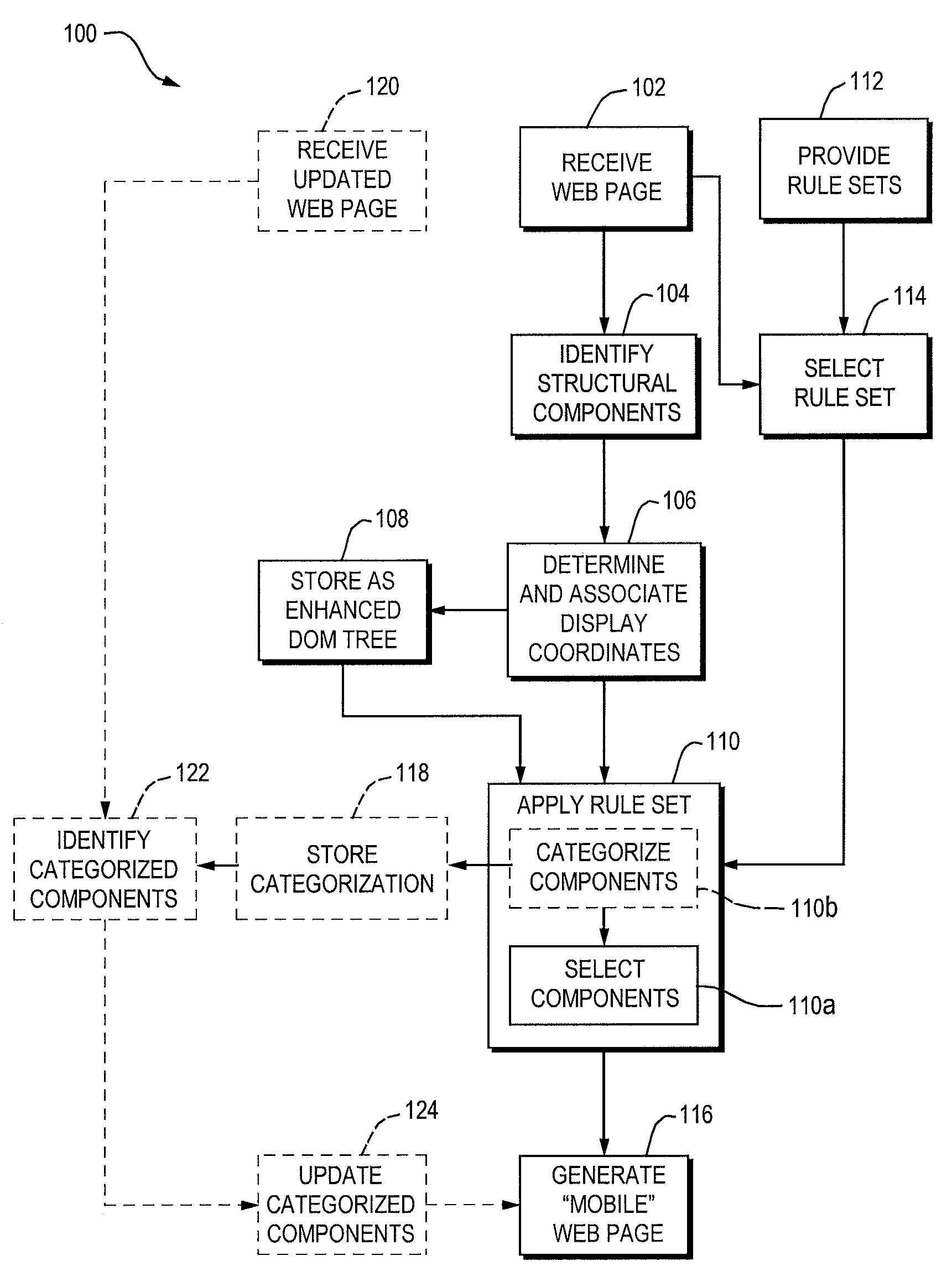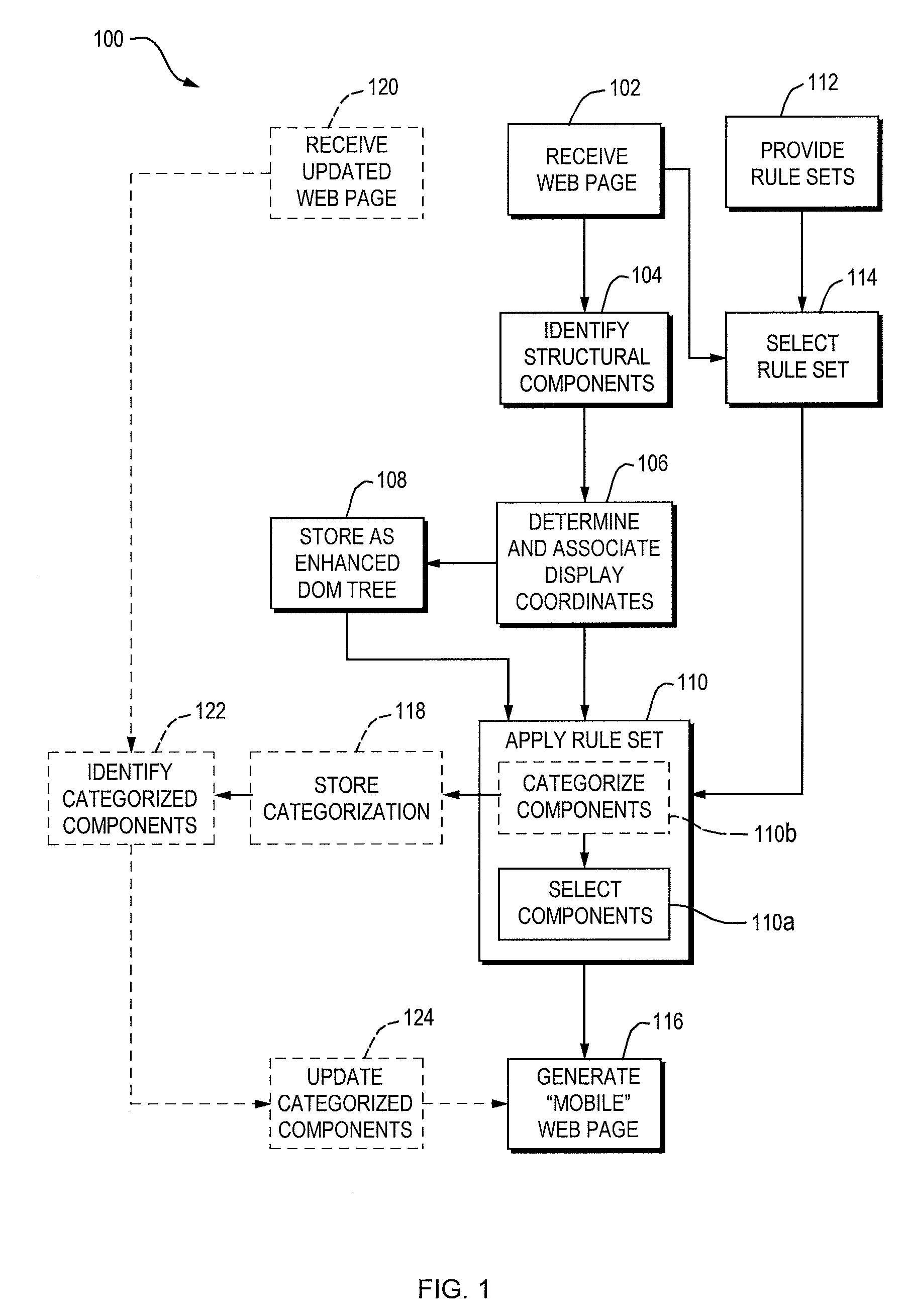Displaying Content on a Mobile Device
- Summary
- Abstract
- Description
- Claims
- Application Information
AI Technical Summary
Benefits of technology
Problems solved by technology
Method used
Image
Examples
Embodiment Construction
[0021]Generally, the invention provides techniques and supporting systems that facilitate the display of a web page on a device of reduced screen size. In doing so, components of the web page that are deemed important or that meet certain criteria are identified in and extracted from the source code of the web page. In certain instances, the physical location of the components is critical to determining if a particular component will be included or not. In some cases, other attributes (name, size, type) may contribute to whether the component is included. For example, a news site may include a header image, multiple text stories, navigational components (menus, topics, etc.), advertisements, as well as other items. Because the page is designed to be rendered using a standard web browser operating on a personal computer (typically having a monitor of 17, 19 or 21 inches in size), usually, all of the components are rendered when the page is requested. However, as web-browsing function...
PUM
 Login to View More
Login to View More Abstract
Description
Claims
Application Information
 Login to View More
Login to View More - R&D
- Intellectual Property
- Life Sciences
- Materials
- Tech Scout
- Unparalleled Data Quality
- Higher Quality Content
- 60% Fewer Hallucinations
Browse by: Latest US Patents, China's latest patents, Technical Efficacy Thesaurus, Application Domain, Technology Topic, Popular Technical Reports.
© 2025 PatSnap. All rights reserved.Legal|Privacy policy|Modern Slavery Act Transparency Statement|Sitemap|About US| Contact US: help@patsnap.com



